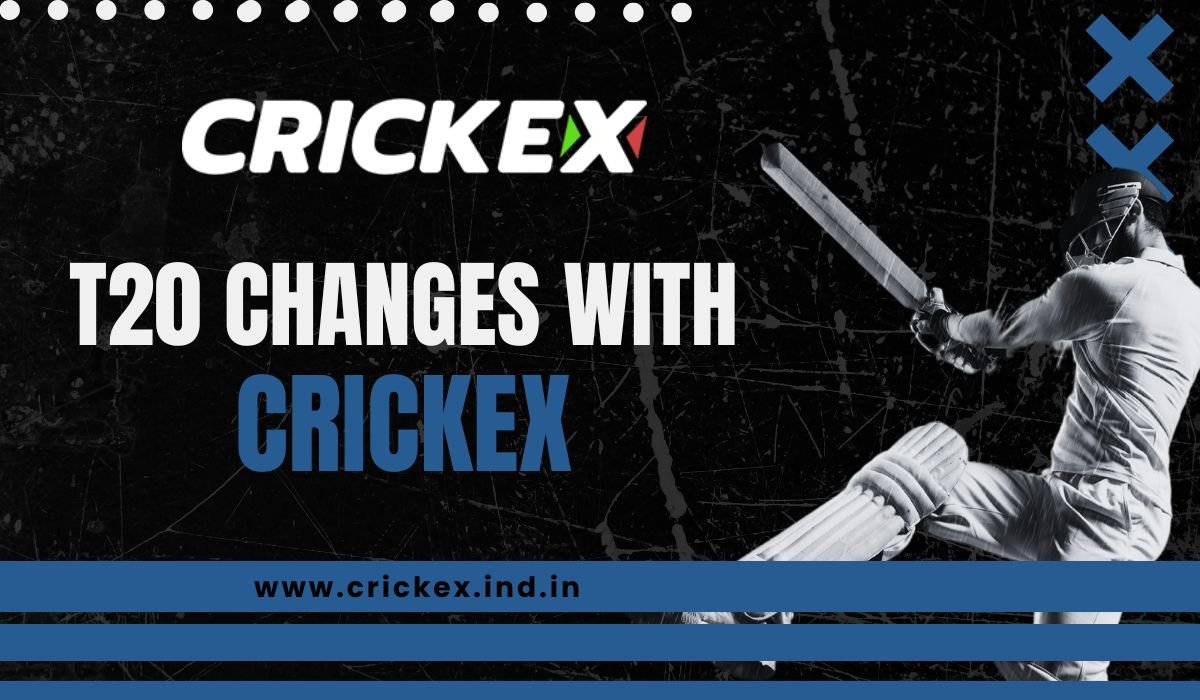T20 cricket has transformed the sport more dramatically than any other format in history. What was once viewed as an experimental, fast-paced format for entertainment has now become the heartbeat of global cricket. With packed stadiums, high-voltage performances, and broadcast deals worth millions, T20 cricket has redefined the game’s structure and its followers’ expectations. Platforms like Crickex have played a vital role in analyzing this evolution, helping fans track not just scores but the underlying shifts in strategy, player specialization, and global engagement.
A Brief Look at How It Began
T20 cricket began in 2003 in England, and though its reception was uncertain at first, the format quickly found favor with fans. Its fast nature, limited duration, and excitement-packed innings offered a contrast to the long-drawn Test matches and even the 50-over ODIs. Within a few years, T20 became more than just a novelty. By the time the inaugural T20 World Cup took place in 2007, followed by the launch of the Indian Premier League in 2008, the format had exploded in popularity.
Crickex’s records from the early 2010s show how average first-innings scores gradually increased, six-hitting frequency soared, and match durations became more manageable for television audiences. These numbers weren’t just statistics—they were indicators of a cultural shift.
Redefining Player Roles in the T20 Era
One of the most significant changes brought by T20 cricket is the evolution of player roles. Traditional cricket celebrated patience, long innings, and tight bowling spells. T20, on the other hand, demands adaptability and immediate impact. Batsmen are now expected to score quickly rather than build innings. Bowlers focus more on deception and variation than sheer pace or spin.
Crickex Login tracks these changes through its real-time performance metrics. It’s now common for teams to use aggressive openers who can hit from ball one, middle-order batters who can switch gears, and finishers trained to handle pressure in the final overs. Bowlers, too, focus on precise execution—yorkers, slower deliveries, and clever field placements are key. What used to be considered a “part-time bowler” may now be a match-winner in the T20 format.
All of these changes are captured through Crickex’s player analysis tools, which show how modern cricketers are being shaped by T20’s demands.
The Franchise Revolution and Its Influence
The emergence of franchise leagues like the IPL, BBL, CPL, and PSL has had a profound impact on the global structure of T20 cricket. These leagues gave players new platforms, introduced auction dynamics, and built fanbases across continents. Players are now not just national heroes but global stars.
Crickex plays an active role during franchise tournaments, offering detailed reports on performances, comparisons between leagues, and cross-format consistency. These tournaments aren’t just commercial spectacles—they are breeding grounds for innovation. Teams experiment with strategies, bring in data analysts, and scout players from around the world based on specific T20 metrics. Crickex mirrors this with region-wise updates and seasonal leaderboards that provide deep insight into league-based evolution.
The Strategic Shift in Captaincy and Tactics
T20 cricket compresses the game into a much shorter timeframe, which puts added pressure on captains and strategists. Decisions that once took hours or even a full day now have to be made in a matter of minutes. Whether it’s choosing a bowler for the final over or sending a pinch-hitter up the order, the margin for error is razor-thin.
Crickex helps fans decode these decisions with live match breakdowns. It identifies match-turning moments, analyzes over-wise performance, and highlights tactical moves that impact the game’s flow. By reviewing patterns over several matches, Crickex Register presents how team strategies have evolved. For instance, opening with a spinner or promoting a lower-order hitter based on matchup data is now a common T20 tactic. These are decisions not made on instinct alone but guided by information—and Crickex ensures that information is accessible to viewers in real-time.
How T20 Is Making Cricket Global
T20 cricket has brought the sport to new territories. Countries like the USA, Nepal, and the UAE are now frequently hosting T20 matches and attracting serious viewership. This is possible because T20 is easy to follow, exciting to watch, and shorter in duration, making it a perfect format for non-traditional cricket audiences.
Crickex’s commitment to covering international T20 matches has helped it stay relevant even outside mainstream tournaments. It offers score updates, player stats, and pre-match analysis for both major and minor teams. Fans from different regions can follow matches involving their homegrown players and emerging talents, which strengthens cricket’s global appeal.
Role of Data and Technology in T20 Evolution
T20 cricket is a data-rich format. With fewer overs, every ball becomes more meaningful, and analyzing each delivery’s impact is critical. Crickex has embraced this by offering users access to real-time data—such as strike rate progression, bowler economy trends, and fielder efficiency.
The use of predictive tools within the Crickex platform helps users estimate likely match outcomes, identify pressure points in games, and evaluate team form. For instance, when a game enters the final five overs with a close chase, Crickex can indicate the win probability based on historical data and current match situations.
Technology is not just an add-on in T20—it is a necessity. And Crickex’s platform is built to meet this demand, giving fans and analysts tools to understand the rapid pace of the game.
Fan Interaction and Real-Time Insights
The T20 format thrives on real-time excitement, and Crickex is built to enhance this experience. Through mobile integration, users can follow matches on the go. Notifications for wickets, milestones, weather updates, and tactical timeouts keep fans connected, while in-app polls and prediction features boost engagement.
T20 cricket has also inspired new forms of fan interaction, such as social media discussions, live chats, and fantasy cricket. Crickex supports this with shareable insights and quick summaries that fans can use to participate in digital conversations. It’s no longer about just watching a game—it’s about engaging with every ball, analyzing decisions, and expressing opinions in real-time.
Regulatory Experiments and Format Tweaks
As T20 continues to evolve, cricket boards are testing new rules to keep the format exciting and relevant. Recent innovations such as impact player substitutions, shortened over limits, and stricter over-rate penalties are some of the changes being implemented.
Crickex monitors these format changes closely and adjusts its reporting accordingly. If a new rule significantly alters how a team plays, Crickex documents that shift through its match summaries and post-game reports. For instance, the use of an impact player who turns a game around in the final overs becomes a discussion point, and Crickex ensures fans are well-informed about its implications.
Crickex and the Future of T20 Cricket
The future of T20 cricket looks vibrant, with more leagues, newer audiences, and evolving gameplay. Crickex is positioned at the center of this growth, not just as a platform that delivers scores but as a tool that explains the context behind those numbers. As players continue to innovate and tournaments push the boundaries of competition, Crickex will continue to capture these moments with clarity and depth.
By focusing on key developments, such as power-hitting trends, bowling adaptations, and real-time data applications, Crickex ensures that fans are not just spectators but informed followers of the game.
T20 cricket has gone from being a side attraction to the main stage of international cricket. It has brought with it an entirely new way of thinking, watching, and analyzing the game. Through this transformation, platforms like Crickex have become essential, offering the insights, data, and real-time engagement that this fast-paced format demands.
From tracking tactical changes to providing weather-adjusted stats and player form indexes, Crickex has positioned itself as a guide for those navigating the ever-changing world of T20 cricket. As the format continues to shape modern cricket, Crickex will continue evolving to meet the demands of fans who expect more than just runs and wickets—they expect a complete cricketing narrative.









